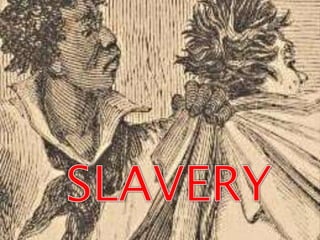Denunciar
Compartilhar

Recomendados
The Berkshires are rich in Black history that is little known and sometimes misunderstood.Black History Month: Influential People of the Berkshires of Western Massachu...

Black History Month: Influential People of the Berkshires of Western Massachu...College Internship Program
Mais conteúdo relacionado
Mais procurados
The Berkshires are rich in Black history that is little known and sometimes misunderstood.Black History Month: Influential People of the Berkshires of Western Massachu...

Black History Month: Influential People of the Berkshires of Western Massachu...College Internship Program
Mais procurados (20)
Henry Minton House Nomination - Philadelphia Historical Commission

Henry Minton House Nomination - Philadelphia Historical Commission
Black History Month: Influential People of the Berkshires of Western Massachu...

Black History Month: Influential People of the Berkshires of Western Massachu...
Semelhante a slavery
Semelhante a slavery (12)
slavery
- 1. SLAVERY
- 2. Free Northern blacks and their enslaved Southern brethren participated in personal as well as organized acts of resistance against slavery. Northern blacks began forming groups to support the cause for freedom. As early as 1817, black Philadelphians formally protested African colonization
- 3. Abolitionists newspapers funded abolitionist activities, thanks to the consistent and generous financial support of black activists, who made up the majority of the paper’s subscribers in its early, critical years. Former slaves and descendants of slaves also published their own newspapers to deliver powerful testimonies.
- 4. Enslaved blacks conducted personal protests against their own forced labor. Many broke tools, slowed the work pace, pretended ignorance, and in some cases, engaged in violence against their masters.
- 5. On numerous journeys into Southern slave territories, the fearless ex-slave Harriet Tubman led over 200 people to freedom, including her parents. Her dangerous work was so successful that Southerners placed a $40,000 bounty on her head. Today, she is widely recognized as the Underground Railroad’s most successful “conductor.